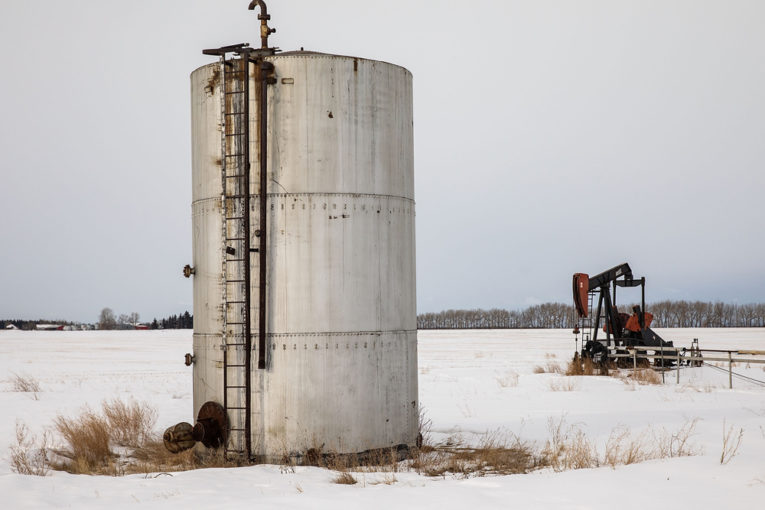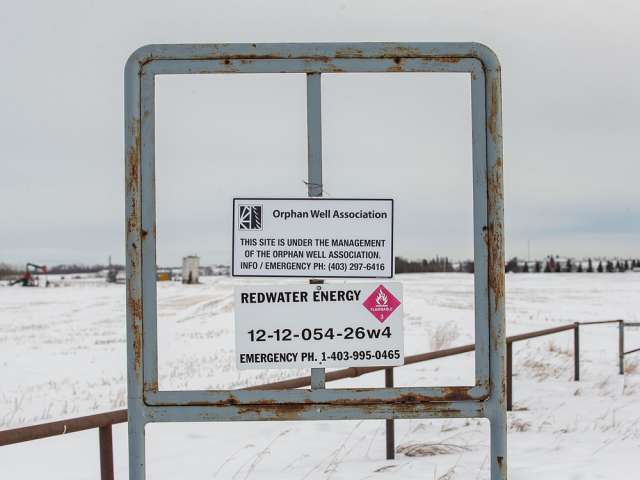
[ad_1]
CALGARY – The Alberta energy regulator will soon unveil sweeping changes to how it regulates its old oil and gas infrastructure, including a complete overhaul of an environmental liability rating scheme it now considers a “flawed system.”
In December, the AER stopped its longstanding practice of publishing liability management ratios (LMRs) for every oil and gas company operating in the province, which were used to measure the value of a company’s assets against its total deemed liabilities. The AER then limited companies with a low LMR score from buying assets that would add to their liabilities.
A full review of how the government and regulators handle oil and gas clean-up rules is years, if not decades, overdue, Alberta Energy Minister Sonya Savage said in an interview with the Financial Post. She confirmed the province would be rolling out new policies by the end of the first quarter of 2020.
“We’re working on and putting the final touches on a whole suite of policies,” Savage said, adding that changes are necessary because using an LMR to gauge a company’s ability to remediate its oil and gas infrastructure, “hasn’t been working.”
“For the liability management issue, we’re looking at decades where no government has been willing to move on this file,” she said.
Taken on its own, the LMR is not a good indicator of a company’s financial health, said AER spokesperson Shawn Roth in an email.
“For this reason, we are no longer posting the LMR reports for individual licensees,” he said, adding the AER is working with the Alberta government “on a more holistic assessment of a company’s ability to address its end-of-life obligations.”
In emails to industry seen by the Financial Post, the AER has been openly critical of the LMR system.
“Changes are coming to (the AER’s directives on clean up obligations), but in the meantime the AER will not perpetuate the false sense of security offered by this flawed system,” reads an email from an AER licensee management, closure and liability manager to an external source.
The regulator had previously touted its LMR system, and a similar scheme called the licensee liability rating (LLR), as best-in-class methods to measure an oil company’s ability to pay for environmental remediation in the oilfield.
However, as thousands of old oil and gas wells have been handed off to the province’s Orphan Well Association during bankruptcy proceedings, experts have blasted the LMR and LLR systems as ineffective.
Asked whether Alberta would move away from a system that tracks a company’s balance between assets and liabilities to one that is more dependent on security bonds, Savage declined to provide specific details but said the province needs “a more fulsome assessment tool.”
“We have to be able to assess the financial health of a licensee,” she said.
For some of the province’s researchers and lawyers, the end of the LMR/LLR system is long overdue.

“I, for years, have been writing in submissions and speaking at conferences saying that the AER’s LMR system is flawed,” said Keith Wilson, a lawyer who represents landowners fighting to get oil and gas wells clean up their properties.
The LMR, Wilson said, allows companies and the regulator to exaggerate the value of the assets and “grossly underestimates the actual liability” to clean up an oil well. Torquing the liability ratings in this manner can paint an inaccurate picture of total oil and gas clean-up costs in the province.
“It’s encouraging that the AER and industry are now finally recognizing that liability management rating is a fundamentally flawed,” he said.
Wilson noted that the AER came to the realization only after some of the province’s largest companies had criticized the measure amid concerns that the larger operators were paying increasingly large levies to clean up messes left by bankrupt juniors.
In a letter to the AER in Nov. 2019, Canadian Natural Resources Ltd. senior vice-president, development operations Bill Peterson objected to a deal between Shell Canada Ltd. and Pieridae Energy Ltd. on the grounds that Pieridae may not have the financial wherewithal to clean up the assets it was buying from Shell.
It’s encouraging that the AER and industry are now finally recognizing that liability management rating is a fundamentally flawed
Keith Wilson, lawyer
“An LMR deposit calculated in accordance with the parameters of Directive 11 will not result in an accurate estimate of abandonment costs for these critical sour wells,” Peterson wrote. “A site specific assessment of liability must be conducted for all the wells, facilities and pipelines to fully determine the true magnitude of the abandonment and reclamation liability related to the assets,” he wrote.
As the largest oil and gas producer in the country by volume, Canadian Natural is the largest single contributor to the Orphan Well Association, which remediates wells that have no viable owner. The company remediated 1,293 of its own wells in 2018 and 2,000 wells in 2019.
A new LMR system will only be effective if the government demands more action from the regulator and companies in the sector, according to Lucija Muehlenbachs, an associate professor of economics at the University of Calgary.
“Functionally, what’s more important is what the AER does with the LMR,” said Muehlenbachs, who has researched the problem of environmental remediation liabilities in the Canadian oilpatch.
The LMR was a flawed measure because it allowed companies in good financial health to avoid posting security bonds and other security for environmental remediation, she said. However, when those companies’ finances begin to deteriorate, they’re asked to post bonds and security — precisely at a time when they have a difficult time finding the money to do so.
“It was an interesting system where you don’t have to post a bond if you were looking good,” she said.
Financial Post
• Email: [email protected] | Twitter: geoffreymorgan
[ad_2]
You can read more of the news on source
